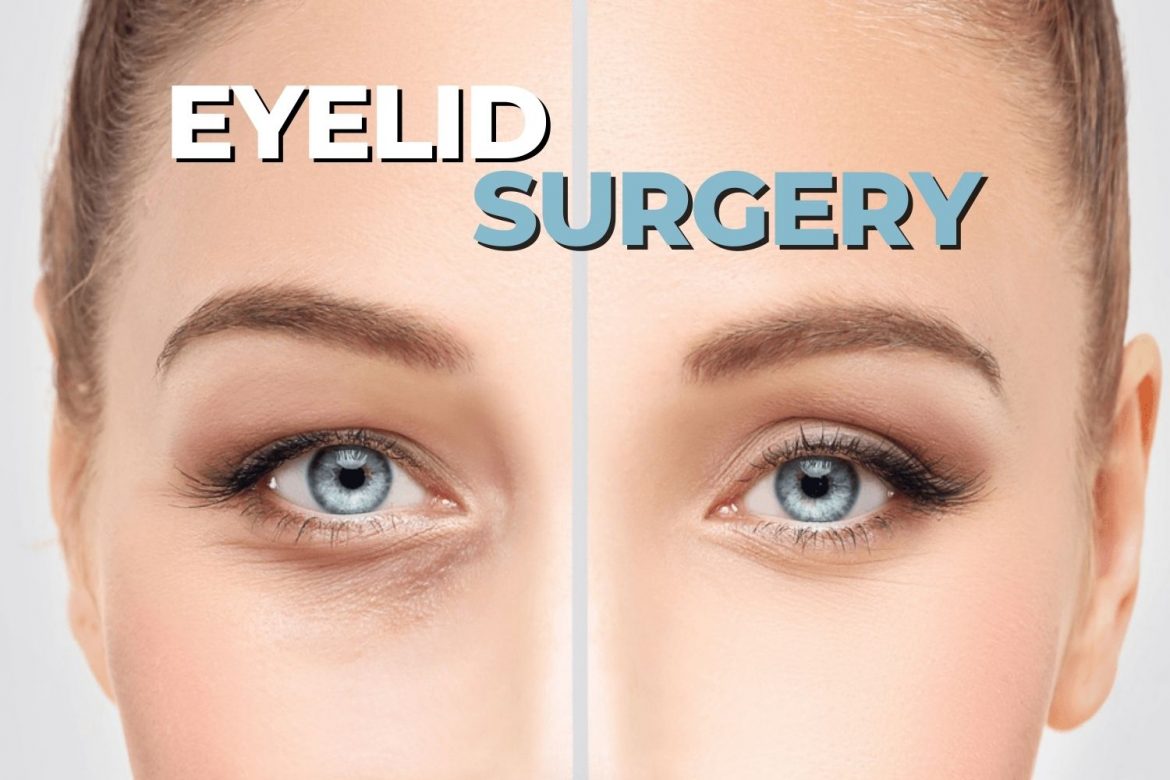![]()
Do your eyelids feel heavy? Are they swollen? Sagging? Does it require effort to keep your eyes open? Or maybe you have noticed a reduction in your peripheral vision. Structural changes in your eyelids could be the reason for your symptoms. If you’re considering eyelid surgery, this article should help you make an informed decision.
What causes droopy eyelids?
The skin around your eyelids is very thin and stretches over time. Drooping or “hooded” upper eyelids, and “baggy” lower eyelids are usually the result of excess skin and underlying fat. While the most common cause of droopy eyelids is aging, there can be additional influences.
Some medical conditions, including stroke and neurological disorders, will impact your eyelid muscles. An injury or trauma, or lifestyle factors like smoking or excessive drinking can contribute to premature aging.
The most harmful environmental factor for your skin is sun exposure. It causes your skin to age much more quickly, developing fine lines, wrinkles, and sagging.
What is eyelid surgery?
Blepharoplasty is the medical term used to describe eyelid surgery. Blepharoplasty reduces the aging effect of drooping or ‘hooded’ upper eyelids and the all too familiar lower eyelid bags that can make you look and feel perpetually tired.
- An upper blepharoplasty removes the excess or stretched skin of the upper eyelid reducing the puffy, ‘hooded’ eyelid appearance.
- A lower blepharoplasty surgically reduces the bags under your eyes and improves under-eye wrinkles, lines and puffiness.
Your surgeon will remove the excess skin and any extra fatty tissue near the eyelid and look to tighten muscles if required. Although blepharoplasty is often a cosmetic surgery, it is deemed a medical procedure when your vision is restricted. In some medical cases, your health insurance provider will cover the cost of the procedure.
Are you a good candidate for eyelid surgery?
- Do you have droopy eyelids that leave you looking tired and drained?
- Is your peripheral vision reduced?
- Do you have puffy under-eye ‘bags’?
- Are your eyelashes hidden under your eyelids?
- Do you have fine lines or excess skin around your eyelids that make you appear older?
If you answered “yes” to any of these questions you could be a candidate for surgery.
Surgical procedure
The surgical procedure for a blepharoplasty is customized for each patient. Your surgeon will tailor the procedure depending on your concerns. The steps involved during blepharoplasty include:
- Mark-up
Prior to the procedure, your surgeon will mark your eyelids. This will guide them when making the incisions. - Anaesthesia
A local or general anesthetic will be administered for your comfort. - Incision
Incisions for eyelid surgery are often strategically placed so that any scarring is likely to be concealed within the natural structures of your eyelid. Your surgeon will then remove excess skin and fat. - Closure of incisions
Eyelid incisions are usually closed with a row of stitches. These stitches will be removed in the clinic room 5-8 days after your surgery. - Recover and heal
Your eyelids will slowly heal and any swelling will settle. This process can take about six weeks, but you will start to see improvements as early as one week after surgery.
Complications of blepharoplasty
All surgical procedures have risks and complications. Your surgeon will make you aware of potential complications at your consultation. While infection is the most common risk, others include bleeding, delayed wound healing, scarring, redness, itchiness, and numbness.
To ensure a good recovery it is important to follow the advice of your surgeon. Post-operative antibiotic creams and eyedrops will be prescribed to aid healing and reduce your risk of infection.
Recovery after eyelid surgery
Your face may look a little bruised and feel tender following the operation. Cold packs can be placed over your eyes for comfort. It will take a couple of weeks for any swelling to settle down. There is not usually a lot of discomfort after the surgery but, if required, oral anti-inflammatories will make you feel more comfortable.
Avoid bending, straining the eyes, or lifting heavy objects for the first week. You may need to sleep in an upright position and keep your head elevated for the first couple of nights following surgery.
Most people go home on the day of their eyelid surgery, but to help with your recovery, you should think about taking a week off work and avoiding strenuous activities for at least six weeks.
Embarking on eyelid surgery
The area around the eyes is extremely delicate and your anatomy is unique to you. Fragile structures under the eyelids, including eye muscles and the eyeball itself, require any surgical approach to be well refined and precise. Increased risk can be associated with an inexperienced surgeon.
Plastic surgery of the upper and lower eyelids can yield immediate, long-lasting, and noticeable results that you will be pleased with for years to come. Always ensure your surgeon is an expert in the field and board-certified with plenty of recommendations from satisfied patients!


